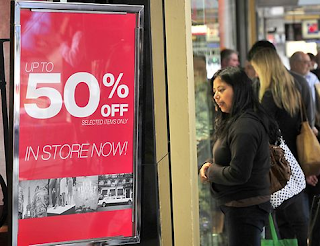Euro Land is Doomed - Achilles Heel of Globalization
 One of the classic landmarks of the Great Depression was the tendency to protect local and national markets from competition. This protectionist behavior resulted in retaliatory actions escalating the issues and resulting in poorer economics for all. The sovereign leaders of Europe are publicly attempting to keep the markets open to free trade, which will facilitate the economies of all and support the struggling peripheral countries. The heads of the 17 Euro nations are working to keep the debt from imploding and destroying the European Union; with each positive announcement, stock markets around the world rise in anticipation of a lasting solution; privately, things may be different.
One of the classic landmarks of the Great Depression was the tendency to protect local and national markets from competition. This protectionist behavior resulted in retaliatory actions escalating the issues and resulting in poorer economics for all. The sovereign leaders of Europe are publicly attempting to keep the markets open to free trade, which will facilitate the economies of all and support the struggling peripheral countries. The heads of the 17 Euro nations are working to keep the debt from imploding and destroying the European Union; with each positive announcement, stock markets around the world rise in anticipation of a lasting solution; privately, things may be different.Relevant tickers: NYSE: DB, NYSE: STD, Nasdaq: ITUB, NYSE: UBS, NYSE: WBK, NYSE: LYG, NYSE: BCS, NYSE: CS, NYSE: AIB, NYSE: BLX, NYSE: NBG, NYSE: RY, NYSE: BFR, NYSE: IRE, NYSE: BMO, NYSE: CM, NYSE: ING, NYSE: C, NYSE: GREK, NYSE: VGK.
The Achilles Heel of Globalization
 All entities work first on their own behalf, and then for the benefit of others. As much as a private citizen may want a strong European Union and the benefits of association, the fact remains that all will be pro-active in assuring the survivability of their own market, their own business, and their own personal welfare. The possibility of peripheral nations exiting the European Union and the complications that action would entail will eventually be the end of globalization.
All entities work first on their own behalf, and then for the benefit of others. As much as a private citizen may want a strong European Union and the benefits of association, the fact remains that all will be pro-active in assuring the survivability of their own market, their own business, and their own personal welfare. The possibility of peripheral nations exiting the European Union and the complications that action would entail will eventually be the end of globalization.Major manufacturers depend on their suppliers to provide the ingredients for production; an unreliable supplier or a supplier that is perceived to be possibly unreliable will be replaced. The natural tendency is to bring the supporting plants to the home country or use businesses within their own country, thus mitigating any disruptions. The industrial giants of Germany and France and general economics will cause the downfall of their weaker neighbors, unraveling the work of the central governments. Greece, Spain, Portugal, and Italy are at tremendous risk; the global banks, insurance companies, and pension funds that have bought their sovereign debt are at risk, and that jeopardizes the entire Globe. The five top banks in the US have Credit Default Swap (CDS) exposure on an even higher magnitude insuring the debt threatening the financial structure of our economy. Investors cannot assess the risk/reward ratio for existing investments; new investments in plants and equipment that stimulate jobs will be postponed until clarity returns. This hesitancy is natural and will cause a downward spiral in economic activity, ensuring a deep and long European recession; it will have a ripple effect across all borders.
Reduced trade with Europe cannot be beneficial to any of the economic zones of the world. The developing economies around the world owe their prosperity to selling goods to the developed countries. Resource rich countries such as Australia and Canada owe their prosperity to selling raw materials to the developing nations, and the US has plants and suppliers outside of the US - notably in China and the Pacific Rim countries. Everything and everyone is interconnected; if a disruption occurs, look for increased protectionism and tariffs along with rising nationalism. An economic slowdown will bring social unrest in the distressed markets, further compounding the tendency to repatriate factories and suppliers back into the home market and exasperating the situation. Globally, bankers, investors, and manufacturers that have made plans on expansion and continued growth with debt obligations will feel the slowdown first. Revenues will be reduced and will result in cost cutting; then employment reductions, further causing social unrest; then non-payment of loans; and finally in the failure of the project and/or total default. A contraction appears to be unavoidable, but there are prudent preparations to consider.
Income and debt level will be paramount to surviving this coming downturn. The savers of the world have been devastated by the historically low interest rates. Savings accounts, CD’s, Municipal Bonds, and US Treasuries, the haven for the retired and conservative investors, have been eviscerated. Pension funds and insurance companies requiring a yield component have been forced to search for much riskier investments to achieve just marginal returns to service distribution requirements. These conservative vehicles may have assumed much more risk than previously thought. Annuities, pensions, insurance policies may be at risk if there is a sovereign default in Europe, unknown to and far away from Main Street America. These are the vehicles in which the retired and elderly often depend along with Social Security; they may be at grave risk. Income enhancing securities such as MLP’s and high yield investment need to be reviewed and if prudent, positions hedged, reduced, or stop losses instituted. Long-term US Treasuries yield less than 3% currently, but provide a reliable income stream, and as the reserve currency of the world, the dollar should benefit from global disruptions.
The central banks of the world typically react to crisis by injecting liquidity, which will eventually, perhaps in 24-36 months, precipitate inflation, possibly double-digit inflation, which will threaten long-term bonds. The task will be to conserve one’s capital and exit the downturn intact and be able to re-position capital when the bottom has been reached. In a reduced revenue and yield environment, payments must be eliminated or reduced to coincide with reduced income in order to conserve capital. Typically a downturn will last 13-26 months, but this one may be longer.
“Underwater” or non-cash flowing Real Estate investments need to be liquidated, preferably via the “short sale” process. Foreclosure typically should be avoided, as the penalty period for obtaining mortgages is reduced using the short sale. If the timing is perfect, the waiting period could coincide with the downturn, and capital could be re-allocated to properties, as long-term inflation may follow the downturn as the liquidity injected into the economy searches for a home. Strategic real estate opportunities are still available, and more may become available as the downturn unfolds. Strategic properties are typically yielding a passive 5-6% return unleveraged to 8-9% cash on cash, with conservative lending. Currently, strategic real estate is a very favorable investment offering monthly income with the strong potential for revenue growth as well as a huge hedge against any future inflation.
There is a strong possibility of a global recession. A prudent investor needs to be aware and cautious as the traditional sources of income have been eliminated. Long-term treasuries are great in deflation and real estate is great in inflation; both generate the current income needed through a downturn. A combination of both may be advisable, check with your advisor and review the suitability for your portfolio.
Article is relevant to Deutsche Bank (NYSE: DB), Banco Santander (NYSE: STD), ITA (Nasdaq: ITUB), UBS (NYSE: UBS), Westpac Banking (NYSE: WBK), Lloyds Banking Group (NYSE: LYG), Barclays (NYSE: BCS), Credit Suisse (NYSE: CS), Allied Irish Bank (NYSE: AIB), Banco Latinamericano (NYSE: BLX), National Bank of Greece (NYSE: NBG), Royal Bank of Canada (NYSE: RY), BBVA Banco Frances (NYSE: BFR), The Bank of Ireland (NYSE: IRE), Bank of Montreal (NYSE: BMO), Canadian Imperial Bank of Commerce (NYSE: CM), ING Groep (NYSE: ING), Citigroup (NYSE: C), Global X FTSE Greece 20 ETF (NYSE: GREK) and Vanguard European ETF (NYSE: VGK).
Please see our disclosures at the Wall Street Greek website and author bio pages found there. This article and website in no way offers or represents financial or investment advice. Information is provided for entertainment purposes only.

Labels: Douville, Economy, Economy-2012-03, Europe, Europe-2012-03, International_Markets, International-Markets-2012-03























